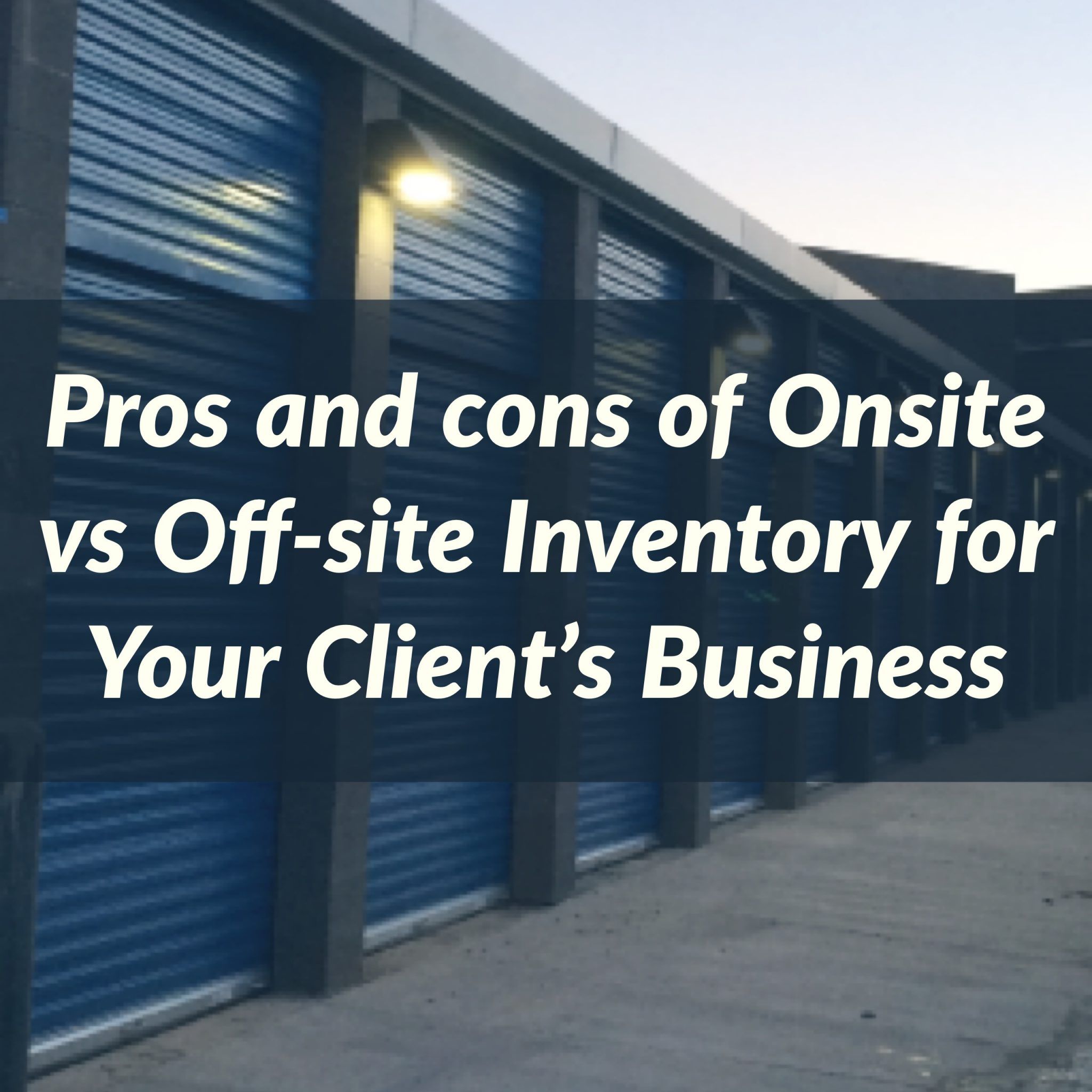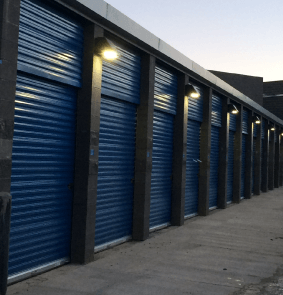
Pros and Cons of Onsite vs Offsite Inventory for Your Client’s Business

How best to manage inventory is a concern for any company. Companies are faced with the dilemma to expand into an offsite inventory location or fully utilize the existing space they currently have. There are advantages and disadvantages to taking either approach.
Onsite Inventory
Pros
All of the things needed for any given project can be found onsite, and if the area is well-organized, this makes it easy to retrieve things quickly when a need arises. When a company wants to contain costs, it’s often most convenient to save by utilizing all existing space. Offsite inventory management for your business usually means that warehouse space has to be leased. Onsite inventory gives you the advantage of shorter lead time for fulfillment of orders. The orders can be pulled and fulfilled in less time in many cases.
Cons
Onsite inventory has its share of risks. Shrinkage from employee theft remains a constant threat to businesses if items aren’t securely locked away. If everything needed for the business is onsite, then the company will have to dedicate a group of personnel to managing the inventory. Personnel often not trained in inventory may contribute to inaccuracies. These inaccuracies could lead to over-ordering and having more product on hand than needed.
Offsite Inventory
Pros
With offsite inventory, you’re likely looking at a larger dedicated storage space such as a warehouse. If you don’t need quite that much space, storage units actually make great “warehouses” for smaller businesses. Offsite inventory is more difficult to access, which may be beneficial for companies with expensive items. Additionally, the option to leverage opportunities for bulk shipping is there. Offsite inventory promotes gradual growth and better organization, relieving the pressures that come with managing a crowded in-house inventory setup.
Cons
Lead time may be extended as a result of items being stored offsite. Inventory that is located elsewhere may be too difficult to monitor and could lead to inventory being held at excess levels. If too many items are purchased for a project and the customer’s needs suddenly change, the items end up taking up space and aging until a similar order requires those things. You may need to hold a secondary larger space, contributing to increase overhead.
***
There is no one universally-correct solution to managing inventory, but there is a method that will work best for particular businesses. Small business/retail clients are most likely to be interested in a space with room for onsite inventory, while larger or rapidly growing companies are more likely to need commercial space to use as a warehouse. Keeping open communication with your client is the best way to make sure you find exactly what they’re looking for.
Featured image source: Colorado Springs Self Storage